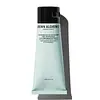What's inside
What's inside
 Key Ingredients
Key Ingredients

 Benefits
Benefits

 Concerns
Concerns

 Ingredients Side-by-side
Ingredients Side-by-side

PEG-8
HumectantSodium Bicarbonate
AbrasiveMagnesium Oxide
AbsorbentEthoxydiglycol
HumectantGlycerin
HumectantButylene Glycol
HumectantOleth-20
CleansingTrihydroxystearin
Skin ConditioningGlyceryl Stearate
EmollientPEG-100 Stearate
Paraffinum Liquidum
EmollientWater
Skin ConditioningTocopheryl Acetate
AntioxidantMelaleuca Alternifolia Leaf Oil
AntioxidantGlycine Soja Sterols
EmollientParfum
MaskingLimonene
PerfumingLinalool
PerfumingAscorbyl Palmitate
AntioxidantRetinyl Palmitate
Skin ConditioningStearyl Glycyrrhetinate
Skin ConditioningTetrahexyldecyl Ascorbate
AntioxidantCaprylic/Capric Triglyceride
MaskingLinoleic Acid
CleansingPhospholipids
Skin ConditioningPhenoxyethanol
PreservativeCI 61565
Cosmetic ColorantPEG-8, Sodium Bicarbonate, Magnesium Oxide, Ethoxydiglycol, Glycerin, Butylene Glycol, Oleth-20, Trihydroxystearin, Glyceryl Stearate, PEG-100 Stearate, Paraffinum Liquidum, Water, Tocopheryl Acetate, Melaleuca Alternifolia Leaf Oil, Glycine Soja Sterols, Parfum, Limonene, Linalool, Ascorbyl Palmitate, Retinyl Palmitate, Stearyl Glycyrrhetinate, Tetrahexyldecyl Ascorbate, Caprylic/Capric Triglyceride, Linoleic Acid, Phospholipids, Phenoxyethanol, CI 61565
Water
Skin ConditioningCamellia Oleifera Seed Oil
Skin ConditioningVitis Vinifera Seed Oil
EmollientCetyl Alcohol
EmollientGlycerin
HumectantGlyceryl Stearate
EmollientAloe Barbadensis Leaf Extract
EmollientCitrus Nobilis Peel Oil
MaskingTocopherol
AntioxidantHippophae Rhamnoides Fruit Oil
Skin ProtectingRosa Canina Fruit Oil
EmollientTriticum Vulgare Germ Oil
EmollientDaucus Carota Sativa Root Extract
Skin ConditioningVanillin
MaskingSodium Stearoyl Glutamate
CleansingRosa Damascena Flower Oil
MaskingSodium Phytate
Benzyl Alcohol
PerfumingDehydroacetic Acid
PreservativeLinalool
PerfumingLimonene
PerfumingWater, Camellia Oleifera Seed Oil, Vitis Vinifera Seed Oil, Cetyl Alcohol, Glycerin, Glyceryl Stearate, Aloe Barbadensis Leaf Extract, Citrus Nobilis Peel Oil, Tocopherol, Hippophae Rhamnoides Fruit Oil, Rosa Canina Fruit Oil, Triticum Vulgare Germ Oil, Daucus Carota Sativa Root Extract, Vanillin, Sodium Stearoyl Glutamate, Rosa Damascena Flower Oil, Sodium Phytate, Benzyl Alcohol, Dehydroacetic Acid, Linalool, Limonene
 Reviews
Reviews

Ingredients Explained
These ingredients are found in both products.
Ingredients higher up in an ingredient list are typically present in a larger amount.
Glycerin is already naturally found in your skin. It helps moisturize and protect your skin.
A study from 2016 found glycerin to be more effective as a humectant than AHAs and hyaluronic acid.
As a humectant, it helps the skin stay hydrated by pulling moisture to your skin. The low molecular weight of glycerin allows it to pull moisture into the deeper layers of your skin.
Hydrated skin improves your skin barrier; Your skin barrier helps protect against irritants and bacteria.
Glycerin has also been found to have antimicrobial and antiviral properties. Due to these properties, glycerin is often used in wound and burn treatments.
In cosmetics, glycerin is usually derived from plants such as soybean or palm. However, it can also be sourced from animals, such as tallow or animal fat.
This ingredient is organic, colorless, odorless, and non-toxic.
Glycerin is the name for this ingredient in American English. British English uses Glycerol/Glycerine.
Learn more about GlycerinGlyceryl Stearate is a mix of glycerin and stearic acid.
It is used to stabilize the mixing of water and oil ingredients. By preventing these ingredients from separating, it can help elongate shelf life. It can also help thicken the product's texture.
As an emollient, it helps soften skin and supports barrier-replenishing ingredients.
In cosmetics, Glyceryl Stearate is often made from vegetable oils or synthetically produced.
This ingredient may not be fungal-acne safe
Fun fact: The human body also creates Glyceryl Stearate naturally.
Learn more about Glyceryl StearateLimonene is a fragrance that adds scent and taste to a formulation.
It's found in the peel oil of citrus fruits and other plants such as lavender and eucalyptus. The scent of limonene is generally described as "sweet citrus".
Limonene acts as an antioxidant, meaning it helps neutralize free radicals.
When exposed to air, oxidized limonene may sensitize the skin. Because of this, limonene is often avoided by people with sensitive skin.
The term 'fragrance' is not regulated in many countries. In many cases, it is up to the brand to define this term. For instance, many brands choose to label themselves as "fragrance-free" because they are not using synthetic fragrances. However, their products may still contain ingredients such as essential oils that are considered a fragrance.
Learn more about LimoneneLinalool is a fragrance and helps add scent to products. It's derived from common plants such as cinnamon, mint, citrus, and lavender.
Like Limonene, this ingredient oxidizes when exposed to air. Oxidized linalool can cause allergies and skin sensitivity.
This ingredient has a scent that is floral, spicy tropical, and citrus-like.
Learn more about LinaloolWater. It's the most common cosmetic ingredient of all. You'll usually see it at the top of ingredient lists, meaning that it makes up the largest part of the product.
So why is it so popular? Water most often acts as a solvent - this means that it helps dissolve other ingredients into the formulation.
You'll also recognize water as that liquid we all need to stay alive. If you see this, drink a glass of water. Stay hydrated!
Learn more about Water